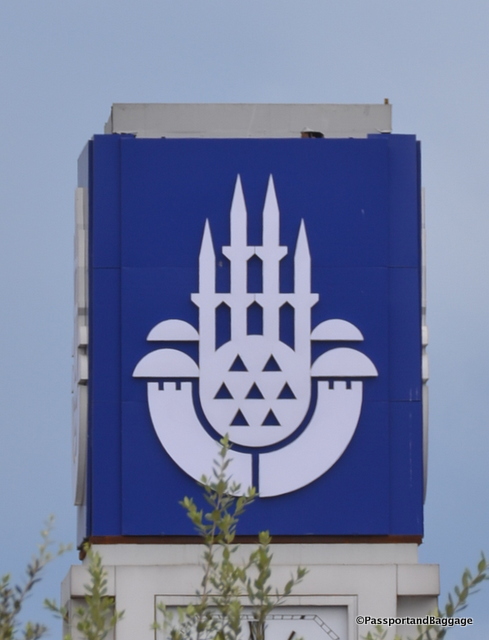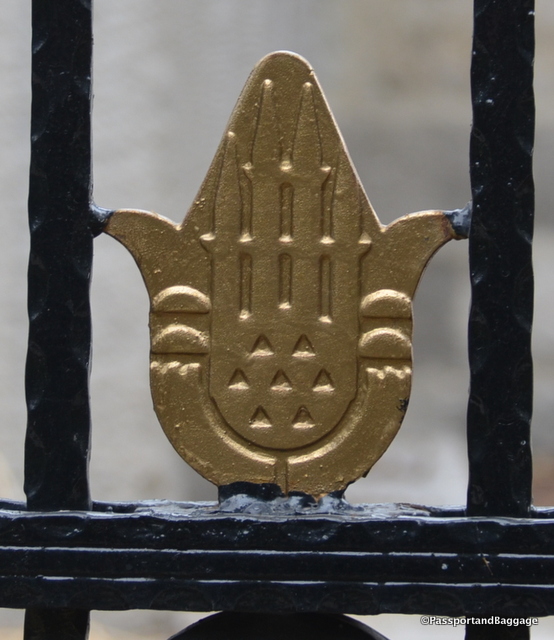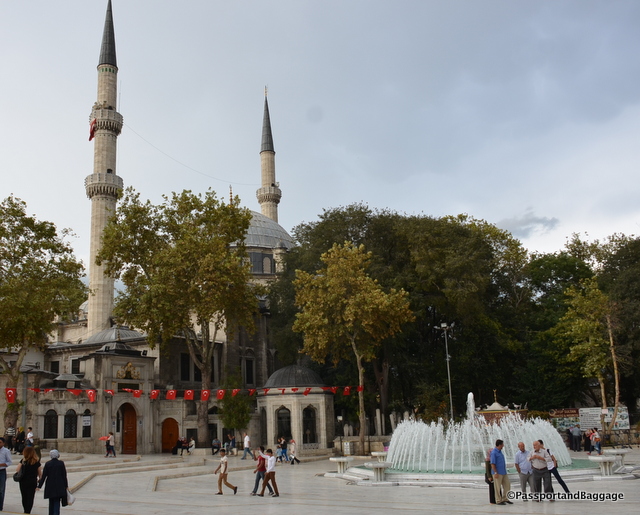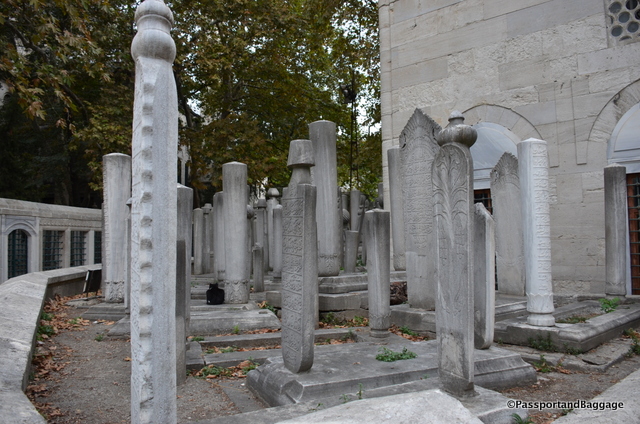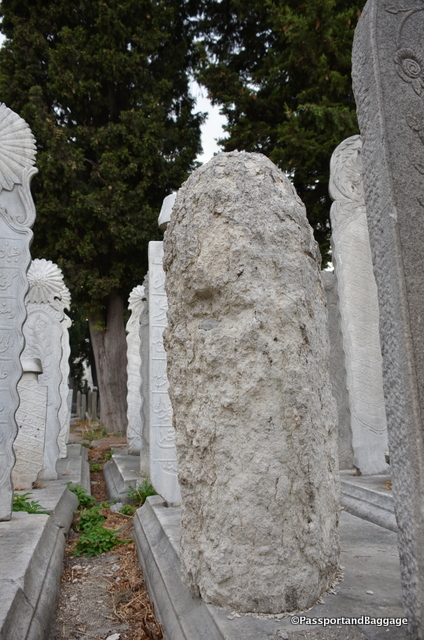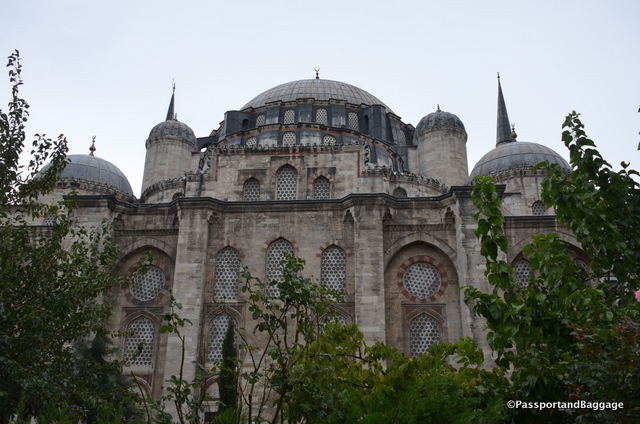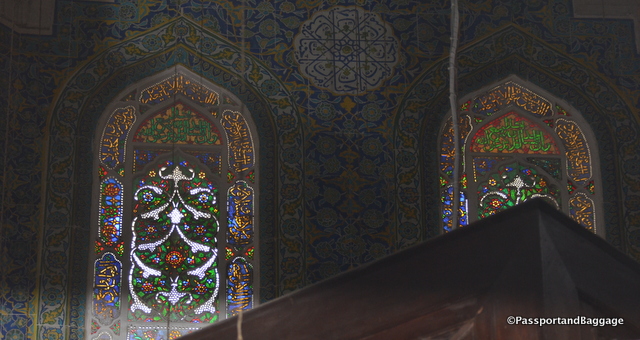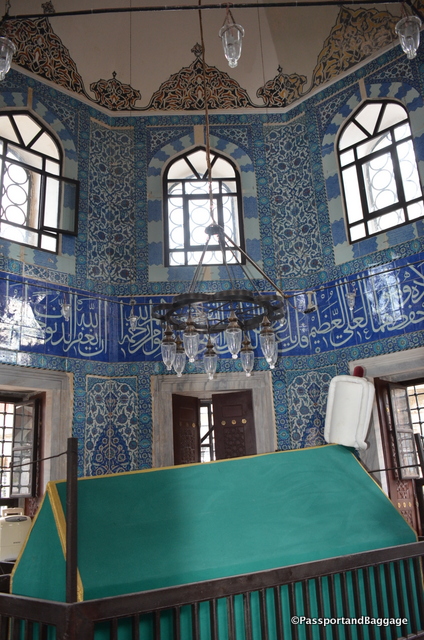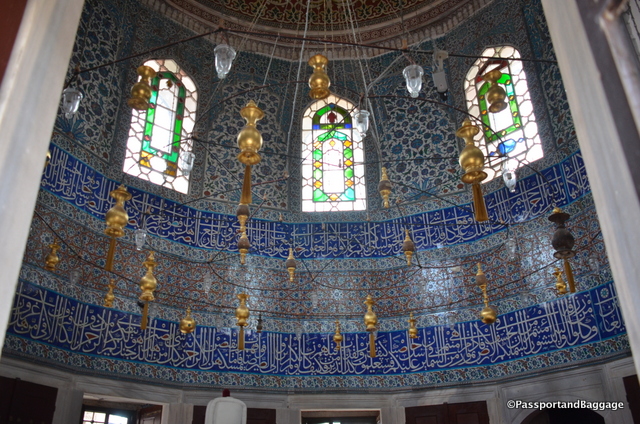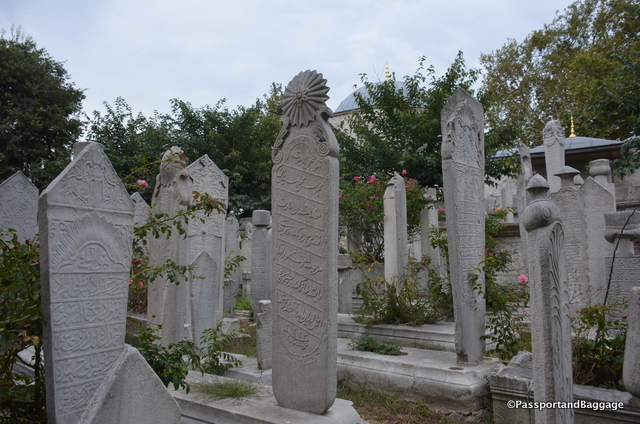September 20, 2016
This is not my first time in Istanbul, so if you are looking for a rundown on the highlights, such as the Blue Mosque and Hagia Sophia, I am sorry.
The emblem of the town of Istanbul was designed by Metin Edremit, after winning a 1968 contest put on by the Municipal Administration.
The lower part of the emblem represents the Bosphorus, the river that separates Istanbul into two parts, Europe and Asia. The city walls of the historical town are shown on each side. The major draw for tourists is said to be the famous mosques and their minarets, those are shown as Istanbul’s skyline. These sit atop seven triangles representing the seven hills on which Istanbul was built.
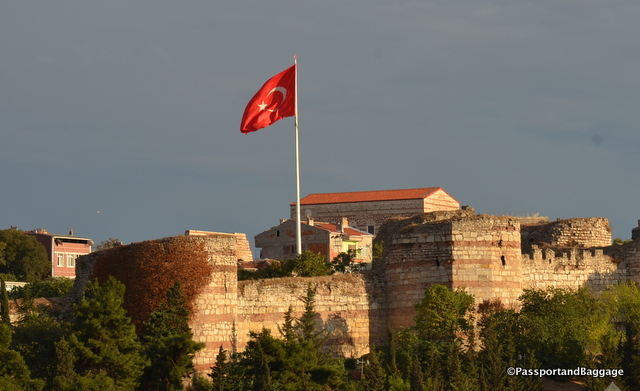 You are still able to see parts of the old city walls, or The Walls of Constantinople, built when Istanbul was Constantinople and the capital of the Roman Empire under Constantine the Great. They were the last great fortification system of antiquity, and one of the most complex and elaborate systems ever built.
You are still able to see parts of the old city walls, or The Walls of Constantinople, built when Istanbul was Constantinople and the capital of the Roman Empire under Constantine the Great. They were the last great fortification system of antiquity, and one of the most complex and elaborate systems ever built.
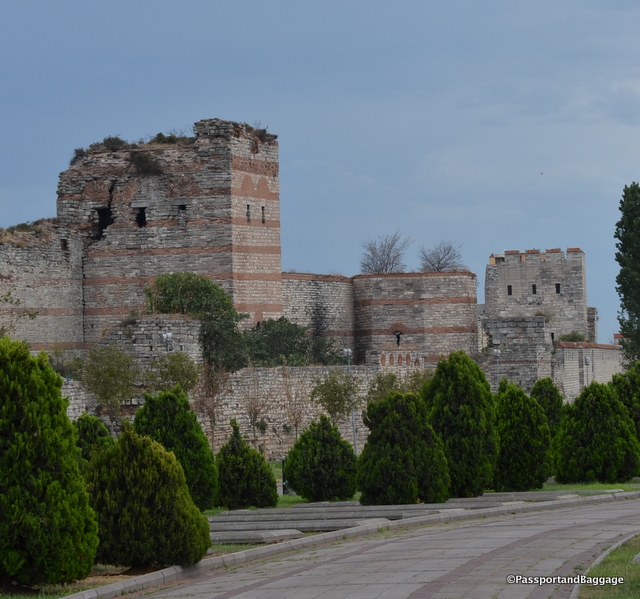 The walls surrounded the city on all sides, protecting it against attack from both land and sea.
The walls surrounded the city on all sides, protecting it against attack from both land and sea.
A double walled portion of the wall was built by Theodosius II in AD 412-22. The famous double line of the Theodosian Walls contained 11 fortified gates, 192 towers and four miles of wall. It was built of red tile alternating with limestone blocks.
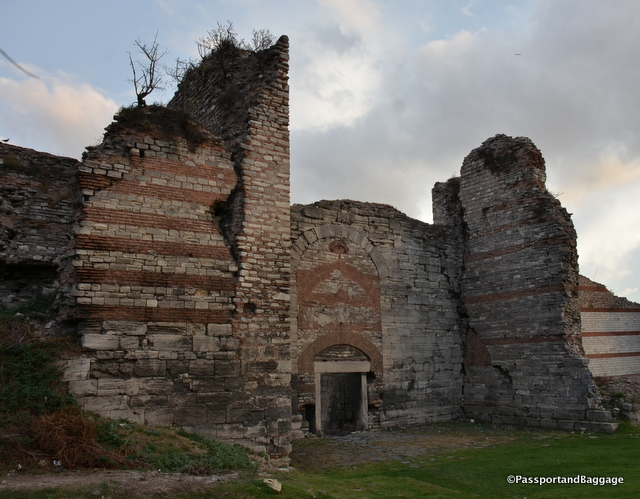 Although the other sections of the walls were less elaborate, when well-manned, they were almost impregnable for any medieval besieger, saving the city, and the Byzantine Empire with it, during sieges from the Avars, Arabs, Rus’, and Bulgars, among others.
Although the other sections of the walls were less elaborate, when well-manned, they were almost impregnable for any medieval besieger, saving the city, and the Byzantine Empire with it, during sieges from the Avars, Arabs, Rus’, and Bulgars, among others.
 The walls were largely maintained intact during most of the Ottoman period until sections began to be dismantled in the 19th century, as the city outgrew its medieval boundaries. More of the wall was demolished in the 1950s to make way for a roadway. Despite the subsequent lack of maintenance, as you can see, many parts of the walls are still standing. A large-scale restoration program has been underway since the 1980s.
The walls were largely maintained intact during most of the Ottoman period until sections began to be dismantled in the 19th century, as the city outgrew its medieval boundaries. More of the wall was demolished in the 1950s to make way for a roadway. Despite the subsequent lack of maintenance, as you can see, many parts of the walls are still standing. A large-scale restoration program has been underway since the 1980s.
Eyup, Istanbul
The Eyüp Sultan Cemetery is one of the oldest and largest Muslim cemeteries in Istanbul, it hosts graves of Ottoman sultans and court members, grand viziers, high-ranked religious authorities, civil servants and military commanders as well as intellectuals, scientists, artists, and poets.
 The cemetery was very popular to the Ottoman people, who wanted to be buried next to the tomb of Abu Ayyub al-Ansari (576–circa 672 or 674) a close companion of Prophet Muhammad. After the Conquest of Constantinople by the Ottoman Turks in 1453, a tomb was constructed above his grave and the mosque, Eyüp Sultan Mosque, was built in his honor. From that time on, the area now known as Eyüp has become sacred, and many prominent people request burial in the proximity of Abu Ayyub.
The cemetery was very popular to the Ottoman people, who wanted to be buried next to the tomb of Abu Ayyub al-Ansari (576–circa 672 or 674) a close companion of Prophet Muhammad. After the Conquest of Constantinople by the Ottoman Turks in 1453, a tomb was constructed above his grave and the mosque, Eyüp Sultan Mosque, was built in his honor. From that time on, the area now known as Eyüp has become sacred, and many prominent people request burial in the proximity of Abu Ayyub.
Among the most interesting graves are of those of the Ottoman-era public executioners who were not allowed to be buried in public cemeteries. A separate burial ground, called the “Executioner Cemetery” existed on the Karyağdı Hill aside the Eyüp Cemetery. Their burial took place only in two cemeteries in Istanbul, and secretly during the night. The headstones were blank without any name and date in order to avoid retaliation by the relatives of the executed persons. Unfortunately, only a few executioner graves have survived up to date.
If you get to the mosque, make sure you take the time to visit the Pierre Loti Cafe, which I did on a separate day, and you can read all about here.
Fatih District of Istanbul
The Valens Aqueduct, a Roman aqueduct, was the major water-providing system of the then Eastern Capital of Rome, Constantinople. Completed by Roman Emperor Valens in the late 4th century AD, it was maintained and used by the Byzantines and later the Ottomans.
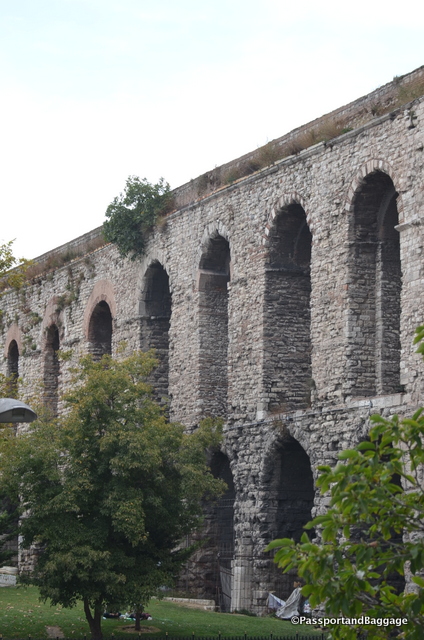 The construction of a water supply system for the city (then still called Byzantium) had already begun under the Roman emperor Hadrian. Under Constantine I, when the city was rebuilt and increased in size, the system was expanded.
The construction of a water supply system for the city (then still called Byzantium) had already begun under the Roman emperor Hadrian. Under Constantine I, when the city was rebuilt and increased in size, the system was expanded.
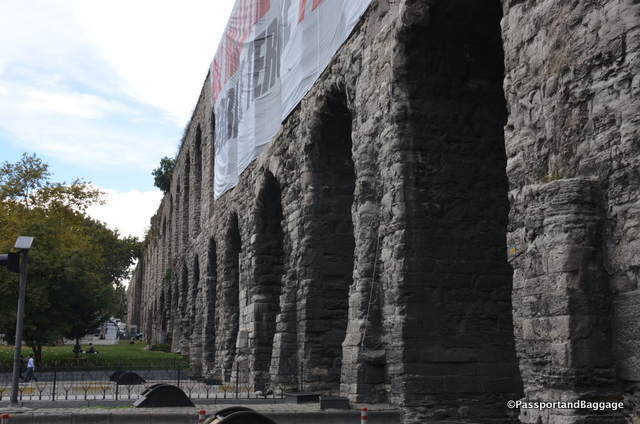 The Valens Aqueduct was merely one of the terminal points of this system of aqueducts and canals – which eventually reached over 160 miles in total length.
The Valens Aqueduct was merely one of the terminal points of this system of aqueducts and canals – which eventually reached over 160 miles in total length.
The exact date that construction on the aqueduct began is uncertain, but it was completed in 368 AD.
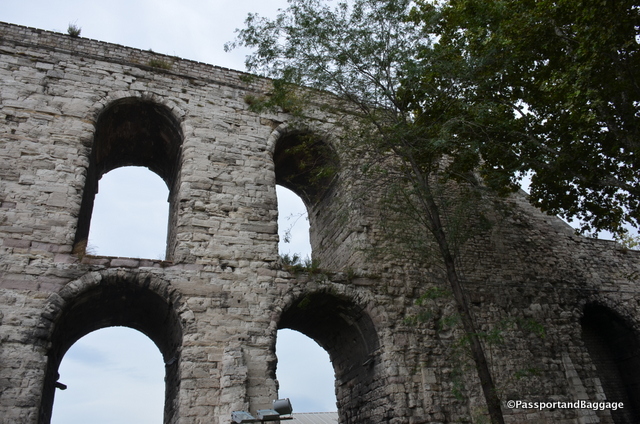 The first row of arches is built with well-squared stone blocks; the upper row is built with four to seven courses of stones alternated with a bed of smaller material with iron clamps. The width of the aqueduct bridge is approximately 25 feet. The pillars are approximately 122 feet thick, and the arches of the lower order are around 13 feet wide. A survey performed in 2009 showed that the pillar’s foundations were about 20 feet below where they are today.
The first row of arches is built with well-squared stone blocks; the upper row is built with four to seven courses of stones alternated with a bed of smaller material with iron clamps. The width of the aqueduct bridge is approximately 25 feet. The pillars are approximately 122 feet thick, and the arches of the lower order are around 13 feet wide. A survey performed in 2009 showed that the pillar’s foundations were about 20 feet below where they are today.
The Sehzade Mosque sits next to the ancient aqueduct and has an impressive series of mausoleums as well. There are five in the funerary garden to the south of the mosque. The earliest and largest is that of Şehzade Mehmed. The interior walls are covered with multi-colored unglazed Iznik tiles, and the windows have stained glass. An unusual feature and something that made photographing difficult is the rectangular wooden throne over Mehmed’s sarcophagus, which symbolized his status as the heir apparent.
To the south of the Şehzade mausoleum is the tomb of Grand Vizier Rüstem Pasha. Rüstem Pasha was the son-in-law of Suleiman the Magnificent.
This was an unusual day spent visiting sites that are well off of the beaten path. This day required an over 12-mile walk and at least 8 tram tokens.
Tram tokens are used every time you get on a tram, when you leave the tram, even to make a connection, you must buy another token. Tokens at this time are 4TL or $1.34.
